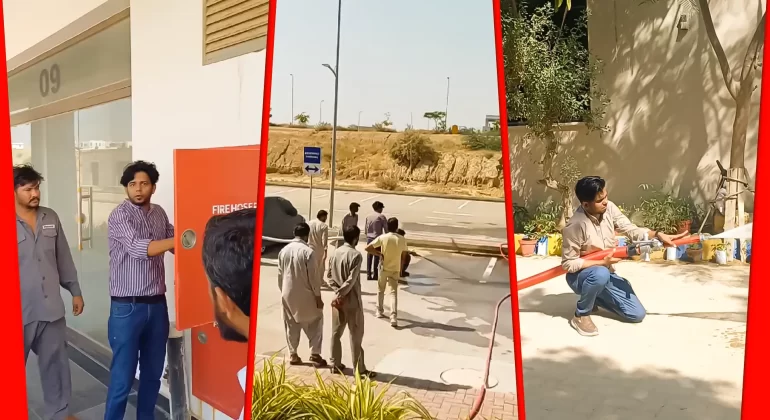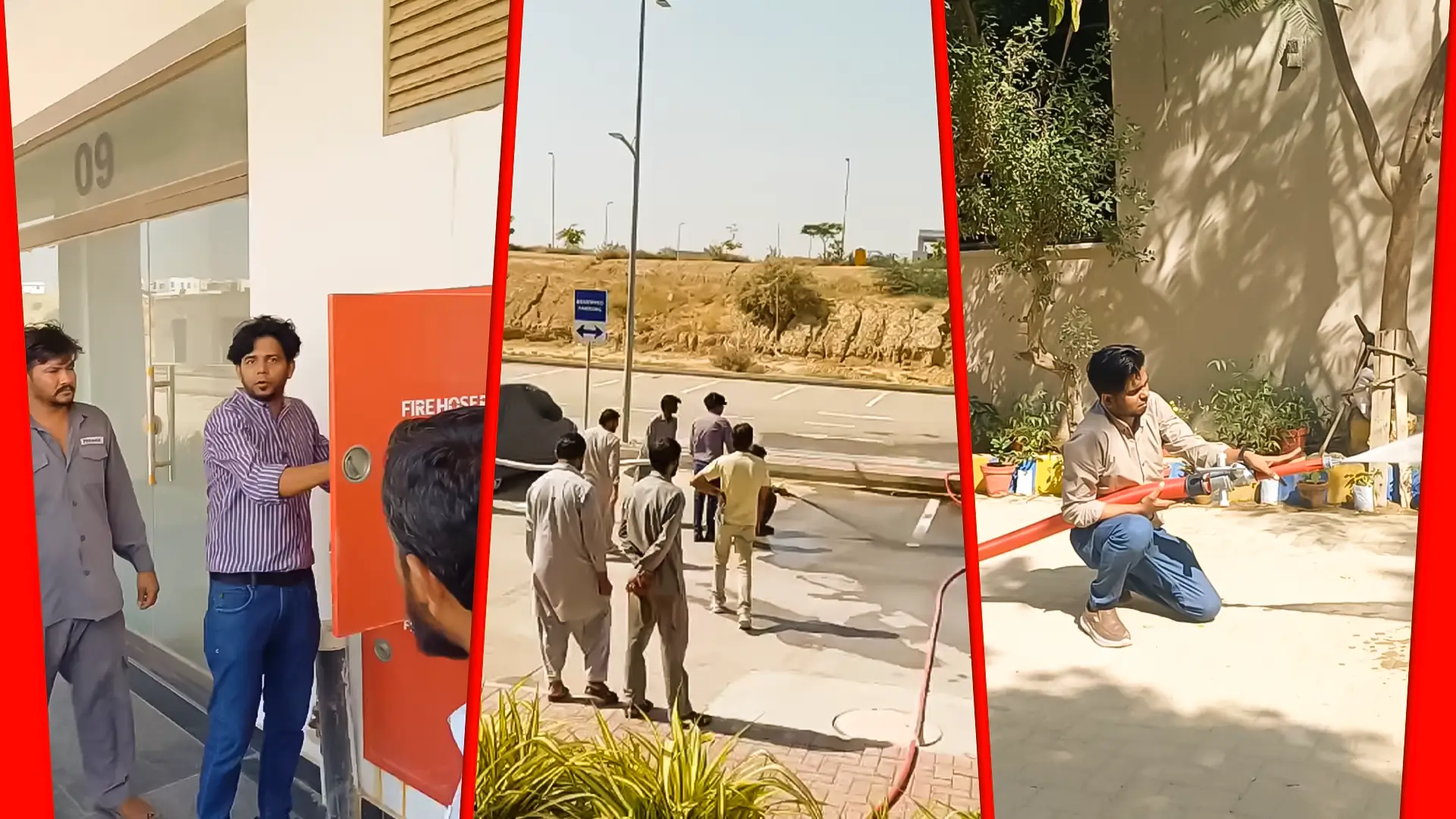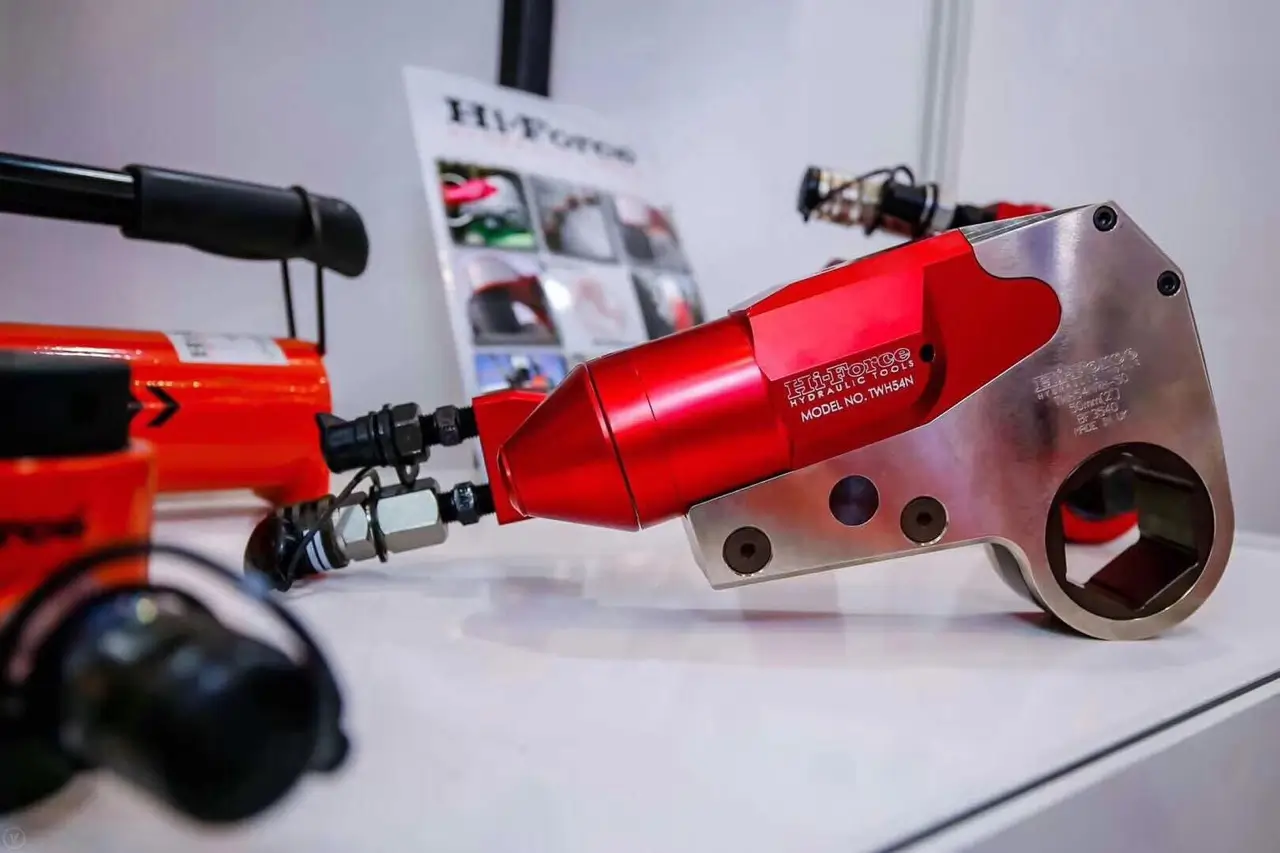Hey there! Let’s chat about something really serious but often overlooked: fire drills at work. You might think, “Oh, it’s just a drill,” but these practice runs are absolutely vital, especially here in Pakistan. When we talk about keeping our workplaces safe, making sure everyone knows what to do if a fire breaks out is at the top of the list.
Why Even Bother with Fire Drills?
Imagine this: the fire alarm blares, smoke starts to fill the hallway, and panic sets in. What do you do? Where do you go? If you’ve never practiced, these questions can be terrifying. That’s where fire drills come in. They’re not just a box to tick; they’re a lifesaver.
In Pakistan, like anywhere else, accidents can happen. And when it comes to fires, things can get dangerous very, very quickly. A well-practiced fire drill can be the difference between a small incident and a major disaster. It helps everyone, from the CEO to the newest intern, know exactly what steps to take to get to safety.
Real-Life Readiness:
Think of a fire drill as a dress rehearsal for a very serious play. You want everyone to know their lines and their exits. When a real fire happens, there’s no time to figure things out. People need to react instantly and correctly. Fire drills help build that muscle memory.
Regular fire drills mean that when the actual emergency strikes, people won’t freeze up. They’ll know the escape routes, where to meet up, and what not to do (like trying to grab your laptop!). This calm and coordinated response is critical for workplace safety in Pakistan.
What Makes a Workplace Fire Drill So Crucial for Businesses in Pakistan?
Pakistan’s workplaces vary a lot – from busy factories in Karachi to modern offices in Lahore and smaller businesses in Islamabad. No matter the size or type, every single one needs a solid plan for fire safety.
1. Everyone Knows the Escape Routes
This is perhaps the most straightforward benefit. During a fire drill, you learn the fastest and safest ways out of the building. You find out where the emergency exits are, and you practice using them. Sometimes, the quickest way out isn’t the path you use every day. Knowing these alternative escape routes is incredibly important.
2. Avoiding Panic and Chaos
When a fire starts, fear can quickly turn into panic. People might rush, push, or even get trapped if there’s no order. Fire drills teach people to evacuate calmly and in an organized manner. This drastically reduces the risk of injuries caused by panic. It’s about creating a culture where people react with reason, not just fear. This is a cornerstone of effective fire safety management in any office or factory.
3. Knowing Your Assembly Point
Once you’re out of the building, where do you go? This is another critical piece of information that fire drills cement. An assembly point is a designated safe spot away from the building where everyone meets up. This allows supervisors to quickly check if everyone has evacuated safely. It’s vital for ensuring no one is left behind.
4. Understanding the Fire Alarm System
Do you know what your building’s fire alarm sounds like? Do you know where the nearest pull station is? Fire drills familiarize everyone with the fire alarm system. This way, if you see a fire, you know how to raise the alarm immediately, giving everyone more time to evacuate.
5. Learning About Fire Fighting Equipment
While most people shouldn’t try to fight a major fire, knowing where fire fighting equipment like fire extinguishers are located can be helpful. During drills, often there’s a quick explanation of these tools. More importantly, you learn when it’s safe to use a small extinguisher (for a very small fire) and when it’s time to just evacuate and let the professionals handle it. For larger fires, the focus should always be on getting out safely.
6. Special Attention for People with Special Needs
Not everyone can evacuate at the same speed. Some employees might have mobility issues, others might need extra assistance. Fire drills help identify these individuals and ensure there’s a plan in place for their safe evacuation. This shows a commitment to comprehensive workplace safety standards.
7. Keeping Up with Regulations and Best Practices
In Pakistan, like elsewhere, there are regulations about workplace safety and fire prevention. Conducting regular fire drills helps businesses meet these requirements. It also shows a proactive approach to safety, which is good for both employees and the company’s reputation. It’s a key part of maintaining robust fire prevention strategies.
Making Fire Drills Effective: Tips for Pakistani Workplaces
It’s not just about doing a drill; it’s about doing it right. Here are some tips to make your fire drills truly effective:
- Schedule Regularly: Don’t just do one and forget about it. Schedule drills regularly, perhaps twice a year. This keeps the knowledge fresh.
- Vary the Scenarios: Sometimes, block an exit. Make the drill a little unpredictable so people learn to think on their feet, not just follow a routine.
- Clear Communication: Announce when a drill will happen (sometimes, for practice) but also emphasize that in a real emergency, the alarm is the only warning.
- Involve Everyone: From the newest hire to the most experienced manager, everyone should participate.
- Review and Improve: After each drill, gather feedback. What went well? What could be better? Use this to improve the next drill and your overall emergency evacuation plan.
- Educate on Fire Hazards: Use the drill as an opportunity to remind employees about common fire hazards in the workplace and how to avoid them. This boosts overall fire safety awareness.
The Role of Fire Fighting and Fire Protection Equipment
While drills teach us how to evacuate, we also rely heavily on proper fire fighting and fire protection equipment. This includes:
- Fire Extinguishers: For putting out small fires quickly.
- Fire Alarm Systems: To detect smoke and heat and alert everyone.
- Sprinkler Systems: Automatic systems that douse fires.
- Emergency Lighting: To guide people in smoky or dark conditions.
- Exit Signage: Clear signs pointing to the nearest escape route.
These tools are crucial, but they are only effective if people know how to react when they activate, and that’s exactly what fire drills reinforce. Investing in high-quality fire protection equipment in Pakistan alongside regular drills creates a truly safe environment.
A Safe Workplace is a Productive Workplace
Ultimately, investing time and effort in fire drills isn’t just about avoiding a tragedy; it’s also about creating a secure and confident workforce. When employees feel safe, they can focus better on their work. A safe environment also reduces downtime and potential losses from fire damage. For businesses looking for active fire-fighting solutions in Pakistan, integrating regular drills is as important as installing the right equipment.
Final Thoughts: Let’s Prioritize Safety!
So, next time that fire alarm goes off for a drill, don’t groan! Take it seriously. Remember that it’s a practice run designed to save lives, including yours. By participating actively in fire drills, understanding fire safety protocols, and ensuring our workplaces are equipped with proper fire fighting supplies, we contribute to a safer environment for everyone in Pakistan. Let’s make workplace safety a top priority, always!











